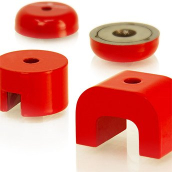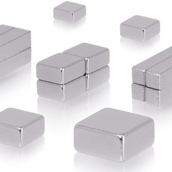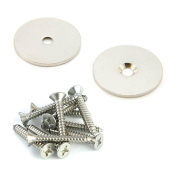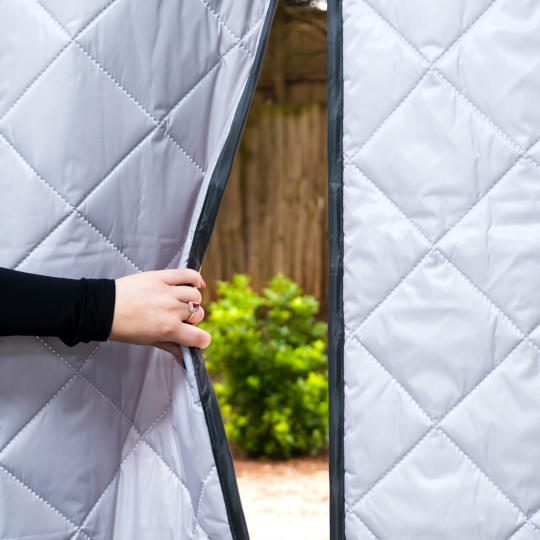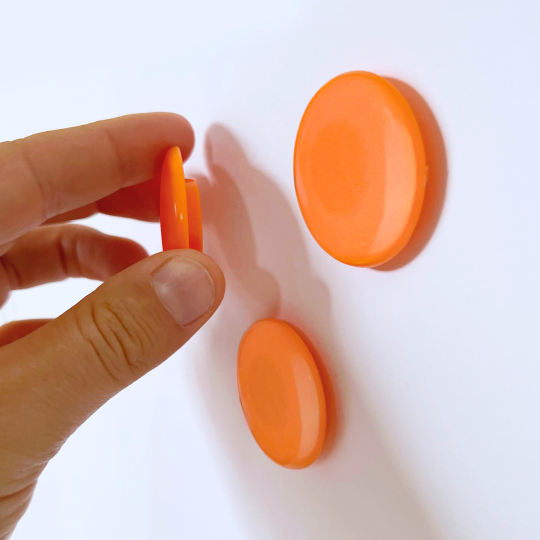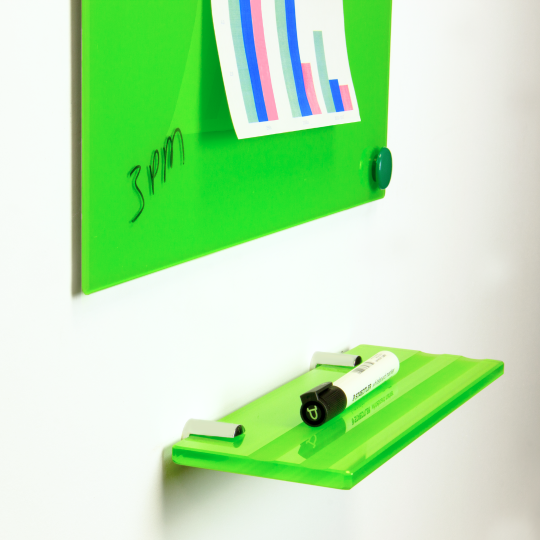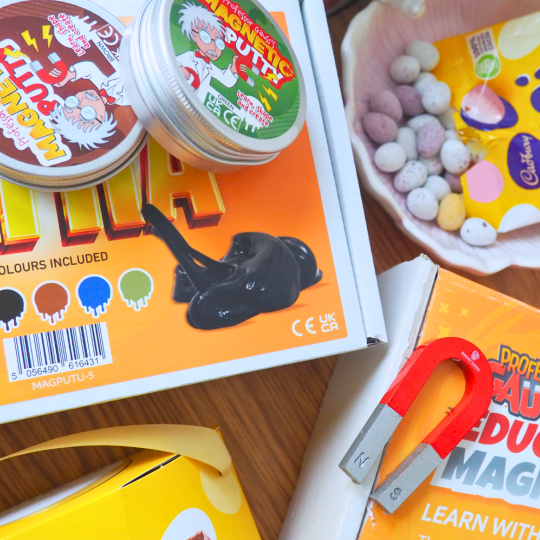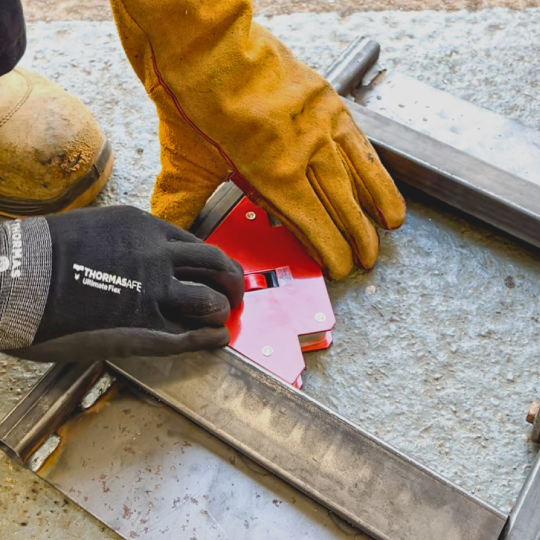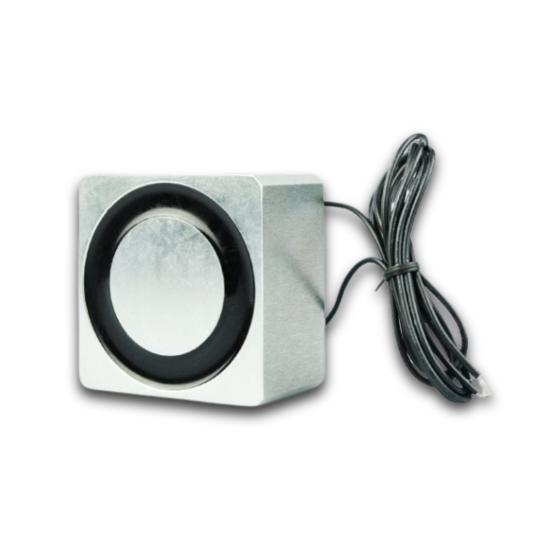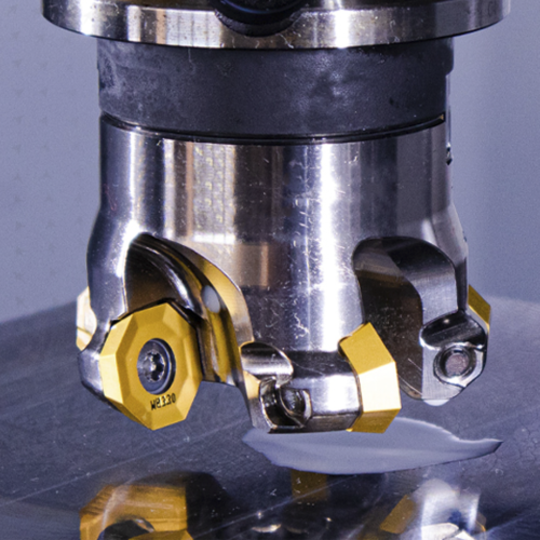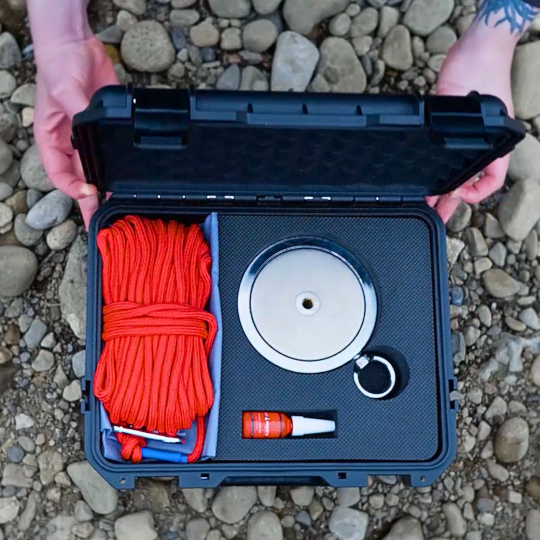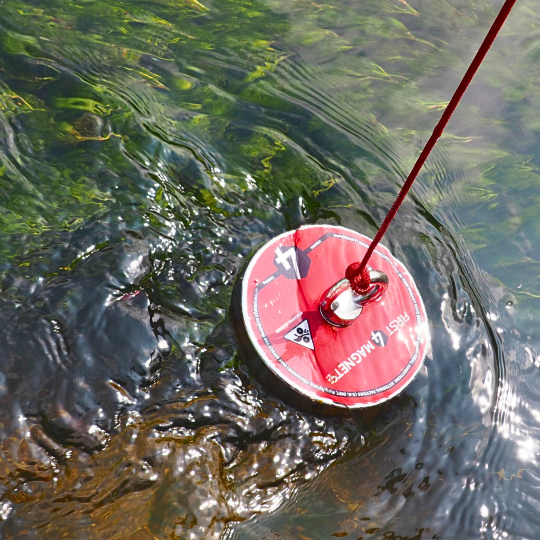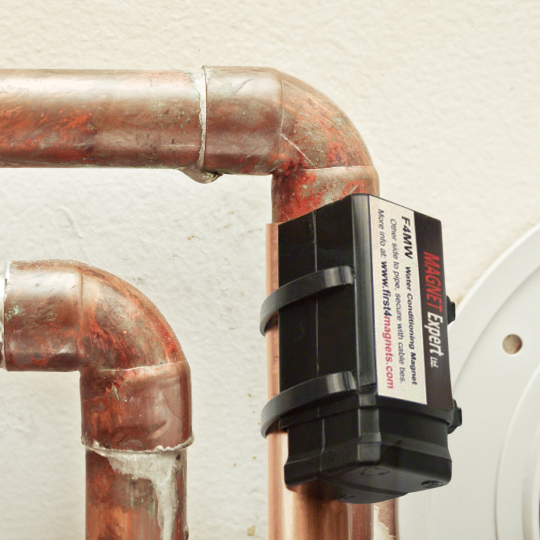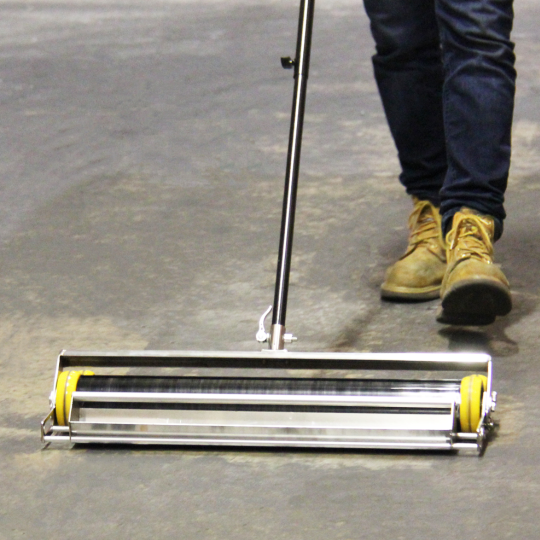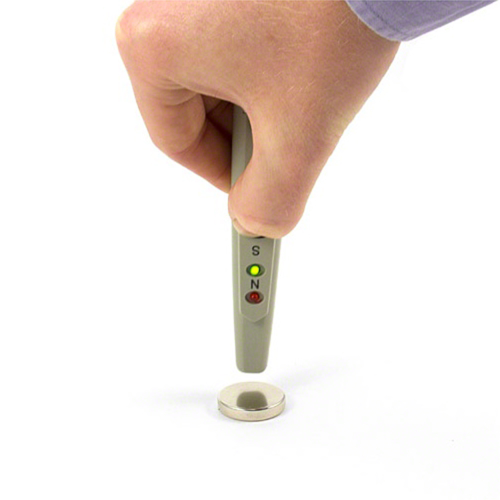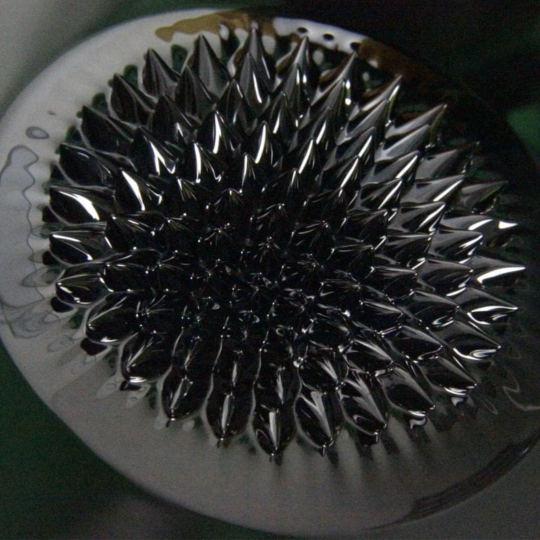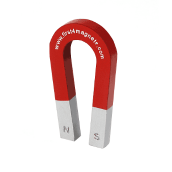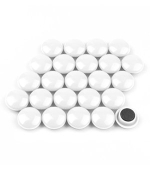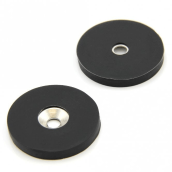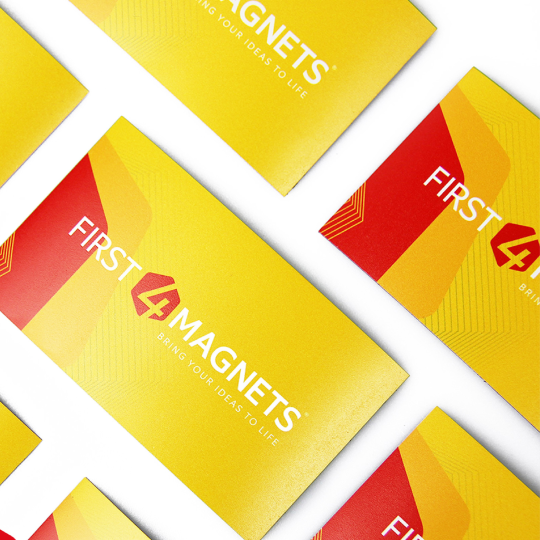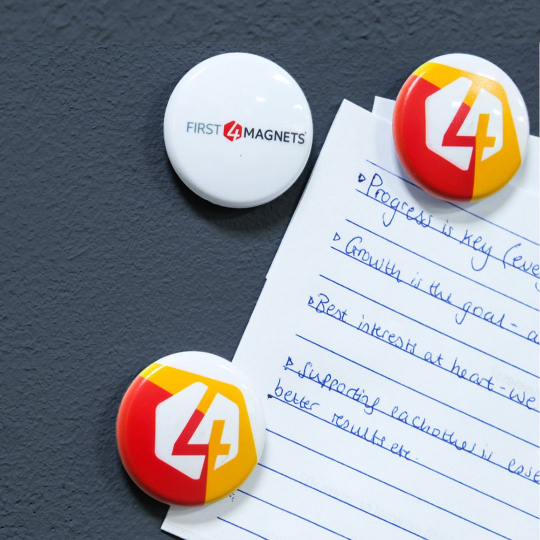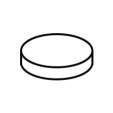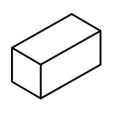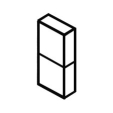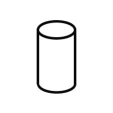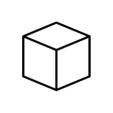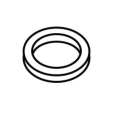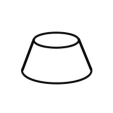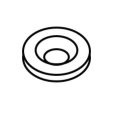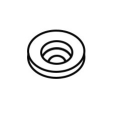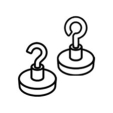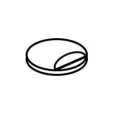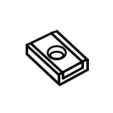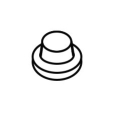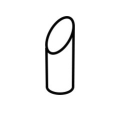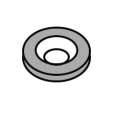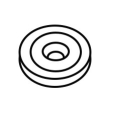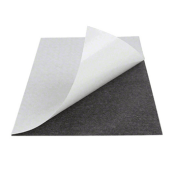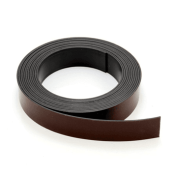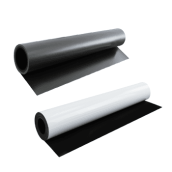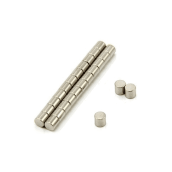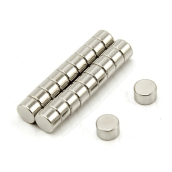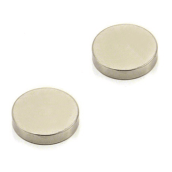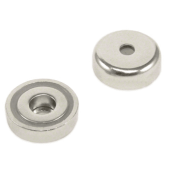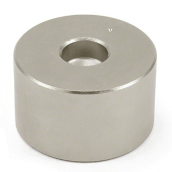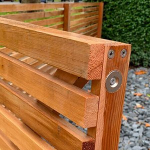Frequently Asked Questions

MAGNET BASICS
What is the difference between a permanent magnet and an electromagnet?
What are permanent magnets made of?
What are magnetic poles?
Which pole of a magnet should I use?
How can I identify the poles of a magnet?
What is the best way to see a magnetic field?
What are rare earth magnets?
What does the 'N' rating of a neodymium magnet refer to?
Can I use adhesive to fix magnets in place and what type of adhesive should I use?
Can I cut or drill a magnet?

TECHNICAL
How are magnets made?
What tolerances are your magnets manufactured to?
How does a magnet work?
What is the difference between anisotropic and isotropic magnets?
What is Gauss?
If a neodymium magnet is described with a Br measurement of 13,800 Gauss. Will 13,800 Gauss be measured on the magnet’s surface?
What does diametrically magnetized mean?
Which materials can I use to block/shield magnetic fields?

PERFORMANCE
Does stacking magnets make them stronger?
Can I increase the strength of a magnet I already have?
Where on a magnet is the magnetic pull strongest?
If I use two magnets to attract to each other, is the total attracting force equal to that of both of the individual pull forces of each magnet combined?
How long does a permanent magnet last?
Are magnets effective when attracting an object over a distance?
How is the strength of a magnet measured?
What factors can reduce the performance of a magnet?
How long will a neodymium magnet last?

HEALTH AND SAFETY
Which magnets are best suited for children to use?
Are magnets dangerous to someone with a pacemaker?
Will a magnet damage my smartphone or tablet?
Will a magnet damage my wristwatch?

PRODUCTS
What is the strongest type of magnet?
What is ferrofluid?
How should you dispose of ferrofluid?
How strong is flexible magnetic tape and sheet?
Can I stick other types of permanent magnets to flexible magnet sheet or tape?
Can I cut your flexible sheet and tape magnets?
Can you print on to your flexible sheet and tape magnets?
Can you supply monopole magnets?

APPLICATIONS
Which magnets should be used for magnetic therapy?
Which magnets are best for making refrigerator magnets?
Which magnets are best suited for glass wipe boards?
Which magnets are best suited for glass wipe boards?
Which magnets are suitable for use with magnetic plaster?
Which magnets are suitable for us with magnetic paint?
MAGNET BASICS
What is the difference between a permanent magnet and an electromagnet?
A permanent magnet is a solid material that produces its own consistent magnetic field because the material is magnetized. Unlike permanent magnets, the magnetic field exerted by an electromagnet is produced by the flow of electric current. The magnetic field disappears when the current is turned off. Typically, an electromagnet consists of many turns of copper wire which form a solenoid. When an electric current flows around the solenoid coil, a magnetic field is created. If an iron core is inserted into the bore of this solenoid, then magnetism is induced into it and it becomes magnetic, but when the current stops flowing it immediately becomes nonmagnetic.
Back to top
What are permanent magnets made of?
There are five types of modern permanent magnets, each made from different materials with different characteristics. The strongest magnets, referred to as rare earth magnets, are commonly known as neodymium magnets which are made from an alloy of neodymium, iron and boron (NdFeb) and samarium cobalt magnets which are made from samarium, cobalt and small amounts of iron, copper and other materials. Other types of permanent magnets include ceramic magnets, made from a compound of ceramic material and iron oxide (SrO.6Fe2O3) and alnico magnets made from aluminium, nickel and cobalt and flexible rubber.
What are magnetic poles?
A magnet’s poles are the surfaces from which lines of magnetism leave a magnet and reconnect on return to the magnet. The pole of a magnet is the area which has the greatest magnetic field strength in a given direction. Each pole is either north facing or south facing.
Which pole of a magnet should I use?
Both the north pole or south pole of a magnet are equal in holding power and both will stick to magnetic material such as steel or iron. The like poles of two magnets (e.g. north facing north or south facing south) will always repel each other while opposite poles (e.g. north facing south or south facing north) will always attract. We supply self-adhesive and countersunk magnets with either pole on the magnetic face.
How can I identify the poles of a magnet?
There are several ways to identify the poles of a magnet, the simplest is to use a compass or an analogue or digital pole identifier.
What is the best way to see a magnetic field?
Iron powder and filings are perfect for sprinkling onto a sheet of A4 paper to show the magnetic fields lines produced by a magnet. Simply place the magnet under the paper and watch the filings move around to show the magnetic field lines of any given magnet. Iron powder and filings are our recommended choice of magnet accessories for schools and universities. See our full range in our Science and education magnets section or try our horseshoe set and bar magnet set.
What are rare earth magnets?
Rare earth magnets are made out of the rare earth group of elements in the periodic table and are famous for their strength. The most common are neodymium-iron-boron (NdFeb) and samarium cobalt (SmCo) varieties. Despite the name, rare earth elements are relatively abundant in the earth’s crust, however, they are not typically found in economically exploitable deposits and are often dispersed, deriving the term ‘rare earth.’
What does the "N rating" of a neodymium magnet refer to?
There are many different grades of neodymium commercially available ranging from N35 to N55, along with other high-temperature variations. The ‘N’ grade relates to the maximum energy product of the magnet, a measure of the magnet’s strength. For example, an N35 neodymium magnet will have a maximum energy product of 35 Mega-Gauss Oersted (MGOe) and an N55 will have a maximum energy product of 55 Mega-Gauss Oersted. Generally speaking, the higher the grade, the stronger the magnet.
Can I use adhesive to fix magnets in place and what type of adhesive should I use?
Most magnets can be bonded in place with two-part epoxy adhesives. We recommend Araldite Rapid which sets hard in about 5 minutes. We also recommend Loctite Industrial strength Adhesive which has a similar setting time. Both these have a proven track record of reliably bonding magnets to most surfaces with the exception of certain polythene type plastics.
Can I cut or drill a magnet?
You should never attempt to cut or drill a magnet as most magnets (excluding flexible magnets) are very hard and brittle due to the manufacturing process. These magnets cannot be drilled with HSS drills or even carbide drills, they need to be drilled or cut with diamond tooling and plenty of coolant as the dust is flammable. The grindings are magnetic and within a few seconds of drilling the whole magnet will look like a hedgehog due to the grindings being attracted to the magnet. It is much better to specify a hole which can be manufactured in and magnetized afterwards.
TECHNICAL
How are magnets made?
Each type of permanent magnet is made in a different way but each will include a process of casting, pressing and sintering, compression bonding, injection molding, extruding, or calendaring processes.
What tolerances are your magnets manufactured to?
All of our magnets at first4magnets are manufactured to a tolerance of +/- 0.1mm (0.004").
How does a magnet work?
How a permanent magnet works is all to do with its atomic structure. All ferromagnetic materials produce a naturally occurring, albeit weak, magnetic field created by the electrons that surround the nuclei of their atoms.
What is the difference between anisotropic and isotropic magnets?
Most modern magnets are manufactured with a preferred direction of magnetism which means they are anisotropic. A magnet is described as anisotropic if all of its individual atomic magnetic domains are aligned in the same direction. This is achieved during the manufacturing process to deliver maximum magnetic output. This direction is called the magnetic axis.
What is Gauss?
Gauss is a measure of magnetic induction and a value of density. Simply put, a magnet’s Gauss measurement represents the number of magnetic field lines per square centimetre, emitted by a magnet. The higher the value, the more lines of magnetism emitted by a magnet, however, alone, it isn’t necessarily a representation of a magnet’s strength. As well as the material, geometry also has an effect on a magnet’s Gauss value, for example, if you have two different sized magnets made from the same material with the same surface Gauss, the larger magnet will always be stronger. Sometimes, a small magnet may have a high surface Gauss but will be able to support less weight than a larger magnet with a lower surface Gauss.
If a Neodymium magnet is described with a Br measurement of 13,800 Gauss. Will 13,800 Gauss be measured on the magnet’s surface?
No, the Br or remanence value is the theoretical maximum density of a magnetic field within a magnet, used in closed circuit conditions. Magnets in open circuit conditions rarely exceed a value of 7,000 Gauss. The open circuit (not attached to any other ferrous object) surface Gauss value is the density of the magnetic field at any point on the surface of the magnet. For example, a 25mm (0.98") diameter by 20mm (0.79") thick N52 neodymium magnet, made from one of the strongest magnetic materials commercially available, will measure a maximum of 6,250 Gauss on the magnet’s surface and considerably less as you move away from the surface.
What does 'diametrically magnetized' mean?
Some of our disc, rod and ring magnets are described as diametrically magnetized, which means rather than having their north and south pole on opposite flat faces, the north pole is on one curved side and the south pole is on the other. Diametrically magnetized magnets are not often designed to hold the maximum possible weight for the size of the magnet but instead are used to provide rotational movement.
Which materials can I use to block/shield magnetic fields?
Magnetic fields will pass through plastic, wood, aluminium and even lead as if it was not there. There is no material that will block magnetism. Ferrous materials such as iron, steel or nickel can conduct magnetic fields and redirect magnetism. All magnetic fields seek the shortest path from north to south and a piece of steel can provide a short cut making the journey from north to south much easier than flowing through air. To remove magnetism from where you do not want it to be, you can use steel to provide the magnet with a shortcut to redirect the magnetism flow via an alternative route. The simplest example is putting a steel keeper across the poles of a horseshoe magnet, all the magnetism flows through the steel and there is no external magnetic field. When we send highly magnetized materials overseas, the airlines stipulate that there should be no magnetism on the outside of the box. To achieve this, we put the magnets in the centre of the box and then line all 6 sides of the inside of the box with steel sheets. Stray magnetism which would normally pass through the walls of the box are suddenly diverted as they conduct through the steel on their journey from north to south.
PERFORMANCE
Does stacking magnets make them stronger?
Using two magnets together wouldn't be exactly the same as having one magnet of their combined size. For example, if you stacked two 10mm diameter x 2mm thick magnets on top of each other you would have effectively created a 10mm diameter x 4mm thick magnet, this would not double the magnets strength and pull, it would provide an estimated 70% increase.
Can I increase the strength of a magnet I already have?
Once a magnet is fully magnetized, it cannot be made any stronger as it is fully ‘saturated’. It is like the analogy of a full bucket of water, once it is full to the brim, it can’t be made any fuller. By adding one magnet on to the other, e.g. stacking, the stacked magnets will work as one bigger magnet and will exert a greater magnetic performance. As more magnets are stacked together, the strength will increase until the length of the stack is equal to the diameter. After this point, any further magnets added will provide a negligible increase in performance.
If I use two magnets to attract to each other, is the total attracting force equal to that of both of the individual pull forces of each magnet combined?
Although the logical assumption would be that when using two magnets together the attracting force would be equal to that of both the individual pull forces combined, this isn’t actually the case. While the total combined attracting force will be slightly increased it won’t be anywhere near the total combined value.
How long does a permanent magnet last?
A permanent magnet, if kept and used in optimum working conditions, will keep its magnetism for years and years. For example, it is estimated that a neodymium magnet loses approximately 5% of its magnetism every 100 years. Optimum working conditions include; not subjecting the magnet to temperatures above its maximum operating temperature, protecting from corrosion and not subjecting them to strong demagnetising fields.
Are magnets effective when attracting an object over a distance?
When a magnet is not in direct, flush contact with a steel surface or another magnet, their ability to attract/repel does decline significantly. How much, is roughly exponential, however, every shape and size of magnet is different. We test the holding strength of all of our magnets in direct contact with a steel plate and through a series of ‘air gaps’ ranging from 0.1mm (0.004") to 20mm (0.79"). If you would like to know how much weight one of our magnets will support over a distance, please give one of our technical experts a call on 800-917-0841.
How is the strength of a magnet measured?
There are several terms used to describe the strength of a magnet, these include:
What factors can reduce the performance of a magnet?
All magnets have a 'pull' rating measured in both kilograms and lbs and this relates to how much force acting perpendicular to the magnet is required to pull the magnet from a steel plate or equal thickness when in direct, flush contact.
How long will a neodymium magnet last?~
Neodymium magnets are permanent magnets, and lose a fraction of their performance every 100 years if maintained within their optimum working conditions.
HEALTH AND SAFETY
Which magnets are best suited for children to use?
Children should always be supervised when playing with magnets. Neodymium magnets are too strong for children and small neodymium magnets are very dangerous if a child swallows more than one as they can attract in the intestines requiring immediate surgery. Small Alnico magnets are strong enough for children to experience magnetism without a risk of trapping fingers. For example the traditional alnico horseshoe magnet and educational alnico bar magnets are widely used in schools. These magnets are also available in sets with iron filings to demonstrate the invisible magnetic fields.
Are magnets dangerous to someone with a pacemaker?
The operation of heart pacemakers will be affected by the close proximity of a magnet as they can cause pacemakers to operate in a mode that does not respond to the user’s own heart rhythm. The way a pacemaker responds to a magnetic field differs between manufacturers and therefore people with pacemakers should not put strong magnets close to their chest.
Will a magnet damage my smartphone or tablet?
Small and medium sized magnets should not have any detrimental effect on your smartphone or tablet. It is quite possible that these devices already contain small magnets which enable them to perform certain functions. However, it is always wise to keep large, powerful magnets away from any electronic device as strong magnetic fields could possibly damage mechanical parts.
Will a magnet damage my wristwatch?
It is possible for the tiny components of mechanical wrist watches to become magnetized when placed in closed proximity to strong magnetic fields if the parts are made from ferrous material. If the mechanical ferrous parts become magnetized, they can attract to each other, attract to the inside of the casing causing the watch to run fast or slow or cease working altogether.
What is the strongest type of magnet?
The strongest magnets commercially available are rare earth neodymium magnets. They are made from an alloy of neodymium, iron and boron and are also known as NdFeb magnets. They are available in different grades – the strongest grade commercially available is N55.
What is ferrofluid?
Ferrofluid is a liquid that reacts to magnetic fields and is made from tiny magnetic particles coated with a stabilising dispersing agent within a carrier liquid. The dispersing agent, known as a surfactant prevents the tiny magnetic particles clumping together, even when a strong magnetic field is applied to the liquid. Instead, when an external magnetic field is applied, the particles, each of which behaves like a spherical magnet with a north and a south pole, experience a torque and align themselves in the direction of the magnetic field. This reaction causes the fluid to form amazing spikes which can be precisely controlled by applying and removing a magnetic field, such as that produced by a neodymium magnet. Ferrofluid truly is a wonder to behold and makes an incredibly unique gift.
How should you dispose of ferrofluid?
Ferrofluid is non-toxic and in small amounts, it can be disposed of in the way you would ordinarily dispose of motor oil. Our advise would be to put it in a sealed container such as an old jam jar and take it to your local authority waste recycling dump.
How strong is flexible magnetic tape and sheet?
Flexible magnetic tapes and sheets are not as strong as hard permanent magnets in small volumes, however, when used over a large surface area it can be really effective. Typically, flexible magnetic tape or sheet provides a pulling force of 40 grams (0.08lbs) per cm2 and can offer a cost effective solution for hanging signs and displays.
Can I stick other types of permanent magnets to flexible magnet sheet or tape?
Unfortunately, as other types of magnets such as neodymium or ceramic have greater magnetic performance, they will actually damage the magnetic sheeting by realigning the magnetic particles in the sheet. The result is that the sheet will be significantly weakened in the area(s) that you have placed the magnets. If you are wanting to use a flexible sheet with neodymium magnets you should use a ferrous sheet or tape. While ferrous sheet or tape does not produce any of its own magnetism it is excellent for sticking magnets too.
Can you cut your flexible sheet and tape magnets?
All our flexible sheet and tape magnets can be cut with trimmers or household scissors. Visit our 'Flexible Magnets' section to view our full range.
Can you print on to your flexible sheet and tape magnets?
At FIRST4MAGNETS we can provide flexible magnetic sheet and tape which are laminated with colored vinyl which is ideal for screen printing, digital printing or laminating vinyl graphics onto. We also have our very own printed magnets designer to bring your prints to life!
Can you supply monopole magnets?
Magnetism flows from the north to the south pole of a magnet and if a magnet only had one pole, there would be no magnetism and hence it could not be a magnet. Monopole magnets therefore do not exist. All magnets have both a north and a south pole. If you take a bar magnet with north at one end and south at the other and cut it in half to secure just a north pole, you will find that the two halves suddenly have a north and south pole too. If a monopole was possible, it would facilitate perpetual motion magnet generators which would lead to unlimited free electricity.
APPLICATIONS
Which magnets should be used for magnetic therapy?
At FIRST4MAGNETS we do not have any scientific evidence to support the theory that magnets and magnetic fields provide therapeutic benefits and pain relief. Despite this, we have been contacted by a number of customers who have purchased our magnets who are delighted with the results they have experienced. If you are looking for magnets for magnet therapy, you will find suitable products in our magnetic therapy section.
Which magnets are best for making refrigerator magnets?
Generally speaking, the refrigerator magnets you buy from gift or souvenir shops will have a flexible rubber or ceramic magnet on the back. Both types of magnets are great value for money and, while not as strong as neodymium magnets, they are more than strong enough to hold a lightweight item to a refrigerator. Both are flexible rubber and ceramic magnets are available with self-adhesive on one side and are great for making your own refrigerator magnets.
Which magnets are best suited for glass wipe boards?
Glass wipe boards have a thick sheet of glass in between the magnet and the magnetic surface, so most magnets which are suitable for normal whiteboards simply fall off of glass noticeboards because they don't have the required depth of field to cope with the thickness of glass. Magnets best for glass wipe boards are strong Neodymium magnets that will penetrate the thickness of the glass to attract to the steel plate behind.
Which magnets are suitable for us with magnetic paint?
The magnets which are suitable for use on magnetic plaster are also great to use with magnetic paint. However, as magnetic paint has a lower ferrous content than magnetic plaster, the attraction will not be as strong. For lightweight items like photos or posters, then our range of magnets for noticeboards are ideal, or small self-adhesive magnets can be stuck to the back of the item you are looking to hang. For picture frames or similar items then our high-powered magnetic sheet or magnetic tape should be sufficient.
